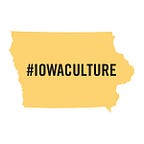Saving Old Buildings (and the Planet)
Never underestimate the power of a protest chant.
When the architect Carl Elefante was assigned to speak several years ago during the sleepy after-lunch slot at a historic-preservation conference in Chicago, the self-described child of the ’60s realized he needed to perk up the crowd. So he added two slides to his presentation and whipped up a chant.
Slide No. 1: “The greenest building is …”
Slide No. 2: “… one that is already built!”
“It got some laughs, but you know what? I got 300-some accountants and lawyers excited,” he recalls. “And I thought, well, that’s a keeper.”
That was back in 2004, long before “sustainability” had become a watchword among historic preservationists. Since then, Elefante has helped countless architects, developers, environmentalists and historic preservationists find common cause.
The former president of the American Institute of Architects will kick off the 2020 Preserve Iowa Summit on June 4 with a keynote address titled “Built Heritage as Climate Action.” (The event is online, so any chanting will be remote.)
Elefante started studying architecture in New York in the late 1960s, just when the historic-preservation and environmental movements were hitting their stride. One of his professors at the Pratt Institute led the charge to save New York’s old Penn Station, which was demolished from 1963 to 1968, and people celebrated the first Earth Day in 1970.
“If you had told me those two things would shape my career, I would have thought, ‘What are you talking about?’” Elefante says.
It wasn’t until the 1990s, well into a successful career, that he started to focus on sustainability. It was counterintuitive in a profession that fixates on the shiny, the new and, quite literally, the next big thing.
But consider this: Americans have built so many new buildings since World War II that experts suggest we’ll demolish a quarter of today’s existing buildings by 2060.
Accordingly, Elefante travels the country to promote older buildings as a valuable resource — for economic growth, for fighting climate change, for learning what life was like “before buildings were addicted to fossil fuels, and cities and towns were addicted to automobiles in the name of progress.”
The message is sinking in, he says, but it’s a two-way conversation. When he talks to historic preservationists, skeptics often tell him that “sustainability is just another ruse for why an old building should be torn down.”
They tell him that people who live and work in old buildings should just accept that they’re drafty and throw on an extra sweater. They tell him old buildings should get a “free pass” from any requirements to become more efficient.
“But if we can’t find ways to make existing historic buildings green,” he says, “we’re damning them to destruction.”
He encourages historic preservationists to emphasize the economic and social benefits of preservation, especially when making their case to developers and city officials.
“Go talk about those things with the mayor,” he says. “Speak that language. Historic preservation is about city pride and city stories, but it’s also about your community getting paid. It’s about high-skilled local jobs.”
For the last 30 years, Elefante has lived in a smallish 1924 house in Maryland, just a block outside the District of Columbia. It’s in a lowlands Takoma Park neighborhood called Hell’s Bottom, and when he first moved in, his friends couldn’t see the appeal.
“From our house, you look up in every direction,” he says.
Over the years, however, things started to look up for the whole neighborhood. A third of the suburb is a historic district and its property values have steadily climbed.
“With historic preservation, there are challenges and opportunities,” he says. “We have to find better ground.”
— Michael Morain, Iowa Department of Cultural Affairs
